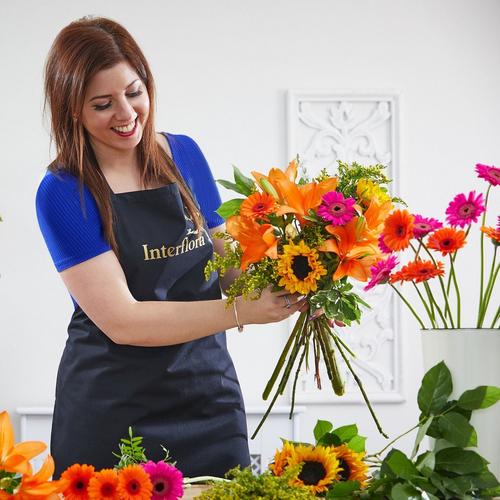- Christmas
- Same Day
- Occasions
- Flowers
- Plants & Gifts
- International
- Funeral & Sympathy
The Ultimate Guide to Alliums
The allium family includes several edible plant species such as onions, garlic, and leeks, as well as a wide variety of ornamental flowers with striking blooms. There are hundreds of species of allium, most of which have large, round heads comprised of tightly clustered flowers, often in purple hues.
Allium meaning and symbolism
In the language of flowers, alliums are a symbol of good luck and prosperity. It means they’re often included in arrangements for those who are about to embark on something new – from a new job to a house move or anything else that heralds a fresh start. The range of colours works well within all kinds of arrangements and they’re a popular choice for larger bouquets.
Allium flowers are very slow to bloom, so they have also become associated with patience and perseverance. This makes them an ideal gift for anyone who is in a period of transition or awaiting news.
Allium flowers are comprised of multiple blossoms all coming from a single bulb, which is why they have also come to symbolise unity and coming together. The fact that many species are edible also contributes to this association as they’re often the base element of shared meals and their rich smell draws people together.
Alliums have become an important element of a number of cultures – often being used for medical purposes, providing delicious flavours in cooking, and being included in religious ceremonies.
Allium facts
- There are nearly a thousand species of alliums, some of which are edible, but most of which are grown for their beautiful flowers. They come in a range of colours, from dark purples and blues through to paler pinks and whites and some greens as well.
- Alliums may take a while to bloom, but the flowers last for a long time as well with varieties that flower as early as the spring and some lasting until late autumn. Most allium flowers grow on long, straight stems without any leaves, making them a dramatic addition to any flower bed or ornamental arrangement.
- Alliums multiply naturally and can take over an area if left to themselves. Their striking appearance makes them ideal for dried arrangements and they can be left on the plant and cut once the drying process is complete.
- Allium Giganteum is the largest species in the genus with blooms that can be up to 15cm across on stems that can grow up to a metre and a half tall. The smallest alliums are just five centimetres high.
- There’s a species of white allium that is not only named after the world’s tallest mountain, but it can grow on Mount Everest as well.
- The strong smell that alliums give off when the stems are broken is one of the things that make them so easy to identify. Some types of allium ooze a clear fluid when their stems are cut and this can turn blood-red when it meets the air.
Types of allium
There are hundreds of different types of allium with different coloured flowers, although most of the more popular ones have the distinctive spherical blooms that are characteristic of the genus. Some of the varieties are noted for their vivid colours, including:
White allium
Blue allium
Pink allium
Yellow allium
When to plant alliums
Allium bulbs can be planted in the autumn, preferably in a sheltered site where the long stems bearing the flowers are less likely to be blown over. They thrive in border beds which get plenty of sunshine and prefer dry soil that doesn’t get waterlogged.
If you choose an area of the garden that is well established and doesn’t need much work, this can help prevent damage to the bulbs that can occur when the surrounding soil is worked. The soil should be prepared to remove any weeds, but it’s best to avoid areas that have had a recent application of manure as alliums prefer soil that isn’t too rich in nutrients.
Bulbs can be planted in pots, but they need to be given space to grow so need to be planted at around four times the diameter of the bulb itself at least. Taller species need plenty of room in between the bulbs, so leave 20cm or more for any of the larger varieties.
How to care for alliums
Planting
Bulbs should be planted in well-drained soil, but they can also be propagated from seeds and, once they have been planted, they will reproduce themselves to fill the available area.
Watering
Alliums are very tolerant of dry conditions, so those grown in flower beds will rarely need watering. Too much moisture will cause the bulbs to rot, so these are an ideal choice for a low-maintenance garden.
Feeding
No special food is required and, although fertiliser might be necessary for those growing in poor soils, they won’t usually need any additional nutrition.
Deheading
Spent flowers can be removed, but they will dry on the stem if left so many gardeners choose to leave them to provide an attractive element for as long as they last.
Replanting
Large clumps of alliums can be lifted, separated and replanted once their active growing phase is complete.
When does allium bloom?


There are varieties that will start to flower in early spring, although these tend to be the shorter ones such as Karataviense and Purple Sensation. For the largest flowers, Globemaster and A. Christophil are strong choices if you’re looking for eye-catching colours throughout the summer.
Creating an allium bouquet







